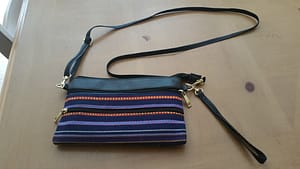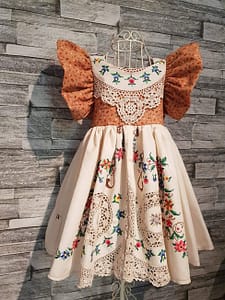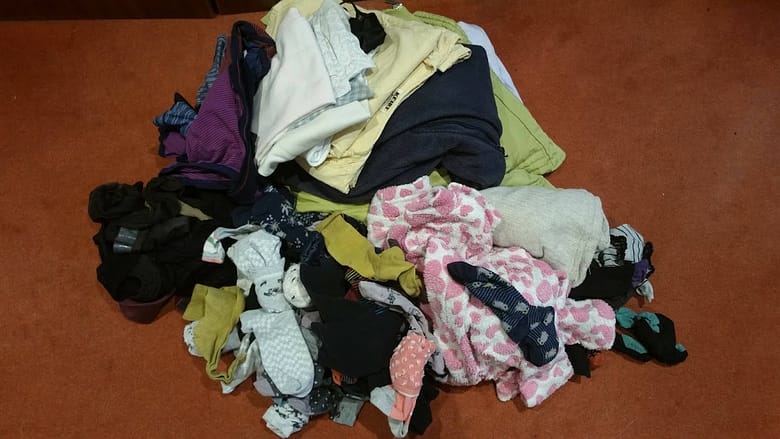We need to change the way we see our clothes. They are not waste. Stop putting your old clothes in landfill.
I am delighted that a report by MPs is urging the UK government to end the era of throwaway clothes and poor working conditions in the fashion supply chain. (MPs call for end to ‘throwaway clothes’ era. By Roger Harrabin, BBC environment analyst). For a list of the recommendations put forward by the Environment Audit Committee see their report Fixing fashion: clothing consumption and sustainability 2019.
When I look at landfill I see a goldmine
Giulio Bonazzi, the founder and chief executive officer of nylon manufacturers Aquafil
When you next decide the throw your clothing away stop and think.
The ‘Love Your Clothes’ campaign (WRAP) aims to raise awareness of the value of clothes. This campaign is part of the Sustainable Clothing Action Plan. They offer all sorts of tips for buying wisely, or hiring or swapping, care and repair, and refashioning and upcycling your clothes.
Take Stock – do you even know what’s in your wardrobe?
I am not asking whether you know how many dresses you have or pairs of jeans, jumpers and so on. But have you ever considered what your clothes are made of, where they came from and where they are going after you have finished with them?
I didn’t know the answer to these questions and I decided to take stock of what was in my wardrobe.
Cotton in my wardrobe
I found I had items made of 100% cotton – sweatshirts and a dress. The dress is looking rather tired. Are there companies out there who will take back tired cotton clothing?
Mud Jeans will take their own cotton jeans back. If you are buying a new pair from them they will take your old jeans from other companies as long as they are over 96% cotton?
Rapanui make T-shirts, shirts and sweatshirts. They too will take clothes they make back.
But what of the 100% cotton clothes bought from elsewhere? Is there a company out there that will take them back? Does anybody know the answer?
Blended fabrics
Other dresses in my wardrobe were made of a polyester mix as were my jeans, which are 70% cotton and 30% polyester.
Many clothes are made of blends, which makes them more difficult to recycle. Companies like Reblend, based in Holland, turn old textiles in to new yarn and make fabric for the fashion and interior design industry. Their aim is to use old textiles and ecologically friendly processes to produce fabrics. They hope to avoid the true cost of new textiles – the water involved in producing them, the CO2 emissions and the use of pesticides.
Care for your clothes and they will last longer
Do you treat some of your clothes badly? I certainly have, not deliberately but without thinking. The fabric on some of my coats has ripped at the pockets because I’ve stuffed too much in them. If we change the way we see our clothes, looking after them will come automatically.
I have three long cardigans in different colourways that have largely retained their shape, except for the pockets where I frequently carry my keys, tissues and dog pooh bags. I make a mental note to use the bag my cousin sent me for dog walking. Its lightweight and colourful.
This simple precaution will protect my cardigans and coats in future and they will last longer.

Repair and Revitalise
In addition I notice the colour on the elbows of these cardigans has largely worn away. Perhaps I could dye these useful garments and so prolong their life. But dyes are released into the environment through washing and when the textiles end up as waste. I must look into environmentally friendly dyes. Another topic to research. I make a mental note and move on.
Recycling
If you are not going to wear the item of clothing and it is still in good condition someone else might wear it: give it away, swap it, sell it or donate it.
Many people give their unwanted clothes to charity. The charity will try and sell it at home or export it so that it can be sold in a second hand markets abroad eg 0xfam. This practice has been the subject of some controversy because the clothes end up in countries that don’t have a waste disposal infrastructure and end up in the environment.
Clothing not sold in markets becomes solid waste, clogging rivers, greenways, and parks, and creating the potential for additional environmental health hazards in Low and Middle-Income Countries (LMICs) lacking robust municipal waste systems.
The global environmental injustice of fast fashion – Rachel Bick, Erika Halsey and Christine C Ekenga
Other people sell their clothes on second hand sites like ebay and Threadup or they swap them with other people at swishing events. I haven’t tried either of these options but I will do now.
Some people rent clothing instead of buying it to avoid having dollars or pounds tied up in dresses or suits they will only wear once. There are companies like Girl Meets Dress (UK), Rent the Runway (USA), Le Tote (USA) and YCloset (China). (Will we soon be renting rather than buying our clothes? by Lucy Hooker, 26 September 2018)
Keep textiles dry
If the item is contaminated or damp then it is going to end up in landfill. So wash and dry your clothes before donating them. Don’t just leave old clothes in the garage before you donate just in case they get damp.
Putting items in the recycling bin
According to South Cambs Magazine residents are putting clothing into their blue bins, where they get wet and are covered in shards of glass. It’s costing £3000 a month to fish them out. They can’t then be recycled and they end up in landfill. The same clothes, if given to charity, could raise money (£6000) for the charities or for the residents. If we change the way we see our clothes and more specifically our old clothes, we won’t treat them like this.
Damaged items can still be recycled
An item that is dry but damaged can still be recycled for fibre, flocking or wipers. There are a wide variety of techniques around for recycling textiles. Some are economically more viable than others. Nylon is one of one of the most viable. ( A review of commercial textile fibre recycling technologies – WRAP).
Textiles4Textiles, based in Holland, have developed a machine that can sort clothing too poor for resale into different materials: wool, cotton, acrylic and common mixes such as cotton 70% and polyester 30% and also into colours to make the fabrics themselves easier to recycle. Once sorted these clothes can compete with virgin materials.
The value of the recycled material increases when the fibre composition is known and it has been sorted by colour.
By recycling old clothes we will save the time, energy and environmental impact of creating new fabrics. Cotton for example requires land, uses a great deal of water, creates carbon emissions involves the use of pesticides and needs low-cost labour.
Buy wisely
Most important of all, buy wisely. Buy things that will last and support companies that are using recycled materials and who are mindful of their impact on their environment. Buy your clothes from companies who take clothes back at the end of their lives.
Patagonia Clothing
Patagonia Clothing produces outdoor wear. They will take back any of the clothes you buy from them.
They aim to produce clothes that will last and if your clothes do get damaged they will repair them. Many of Patagonia’s customers love their clothes because they remind them of the adventures they had when they were wearing them. They patch them up over and over again. Patagonia even have a mobile repair service.
Is this not the way of the future? Do you know of any more companies that do this?
Creating new products out of old clothes on a commercial scale
Refleece
Refleece make covers for electronic goods out of old fleeces they’ve collected and combine them with felt made from plastic bottles to create covers for electronics equipment.
Creating new things out of old clothes at home
I turned my partners old shirts into handkerchiefs and I am planning to create some reusable beeswax food wraps out of them too, to use instead of commercial food wraps like cling-film or plastic bags.

I’ve seen many upcyclers produce new clothes out of old fabrics – curtains and tablecloths. Take a look at the beautiful and eye catching work of Shilo Elizabeth, who makes dresses for kids and wedding dresses out of tablecloths, doilies and other pretty fabrics. Using your imagination and creativity you can create beautiful new things.

We must change the way we see our clothes and other textiles and we must change it now.
